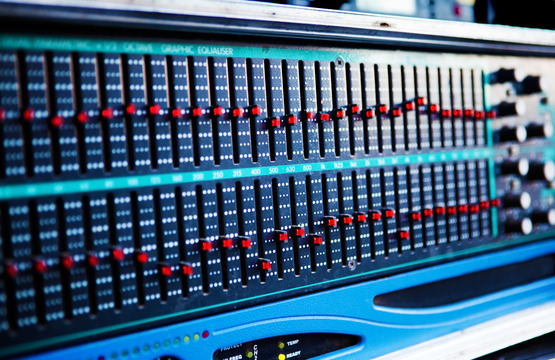Calling All Church Audio Tech Teams – A Secret Recipe for Enhancing EQ!
Mixing audio is hard enough without one of the great sound engineering geniuses of our time looking over your shoulder.
Curtis Roads, the former editor of MIT’s Computer Music Journal and composer of a music genre called microsound, sat nearby watching as I fumbled with some faders. I was taking an exam, which, in a computer music and sound engineering class, means you have to perform on the mixing board. I was far more nervous than I had expected to be. I could feel my index finger tremble ever so slightly as I slid another fader up, careful not to push it too far and cause the signal to peak.
Fortunately, I passed the test and the class. I even earned one of the most memorable compliments I ever received from a professor during my time at UC Santa Barbara: after hearing a piece I recorded for an assignment, the soft-spoken Dr. Roads leaned back a little in his chair, placed his hand on his chin, and gave his reaction to my work with three quiet syllables—“elegant.”
I was over the moon.
Dr. Roads has a rather high standard for compositions. In a 2007 interview with Wired magazine, he revealed that he had been working on the same microsound piece for 20 years. Knowing his appetite for excellence, I was just happy that my humble piece didn’t provoke him to curse or cause him to throw a chair into the computer monitor.
The other moment in that class that sent me over the moon was when Dr. Roads taught us his secret recipe for EQ. I have used it for 10 years, and it has never failed me. Although advanced EQ is all about the finesse of adapting to whatever sonic situation you’re in, this recipe provides a basic, reliable foundation—a sturdy starting point for making your project sound better. The recipe shows you five key spots in the EQ spectrum that you can adjust. You might not need to use all of them all the time, but you can try each one and see which changes help your mix the most:
Boost 80 Hz: This low frequency is what gives bass its thumping, powerful vibrancy. It also helps define the character of your lows so that they’re clearer in the mix. It pumps up the bass without muddying things.
Cut 120-200 Hz: This range of frequencies is the culprit behind “boomy” bass sounds that sometimes cause feedback in the lows. In most mixing situations, it muddies up the mix. Taking it down a little will leave some breathing room for your bass frequencies to flex their muscles at 80 Hz.
Cut 800-1800 Hz: Cutting this range a small amount is what Dr. Roads called “the magic smile.” If you lower this range and boost your volume a little, it will create a magic smile on the graphic EQ and, hopefully, on the faces of your listeners too. Boosting the volume, of course, is not mandatory—especially if it makes the signal peak—but it makes the pleasing effect of the cut more noticeable.
Cut 8-10 kHz: This frequency range tends to add shrillness to music. There seems to be an exception to every rule, especially in audio, but for the most part these frequencies don’t contribute much value to a mix. Cut them a little, and your high end will be less harsh sounding.
Boost 12 kHz: This frequency lies on the sparkly, effervescent end of the spectrum, and if you boost it a small amount, the mix will have a subtle brightness to it. If your audio is sounding dull, damp, and a little muddy, this boost might help.
Although these are not absolute commandments that fix every problem in every situation, they have provided wonderful starting points whenever I sit down to work on EQ. Sound engineers face so many different situations with so many variables that it can be overwhelming just choosing a place to start. It’s nice to have basic, reliable building blocks that, at the very least, will help clarify your mix.
If you’d like to purchase a plug-in suite that includes compressor and EQ software for your computer, please consider purchasing the affiliate product below to support our site:




we are Bangalore Bible Church in India. we would like some instruments for our church.
thanks
Past APS.FRANCIS